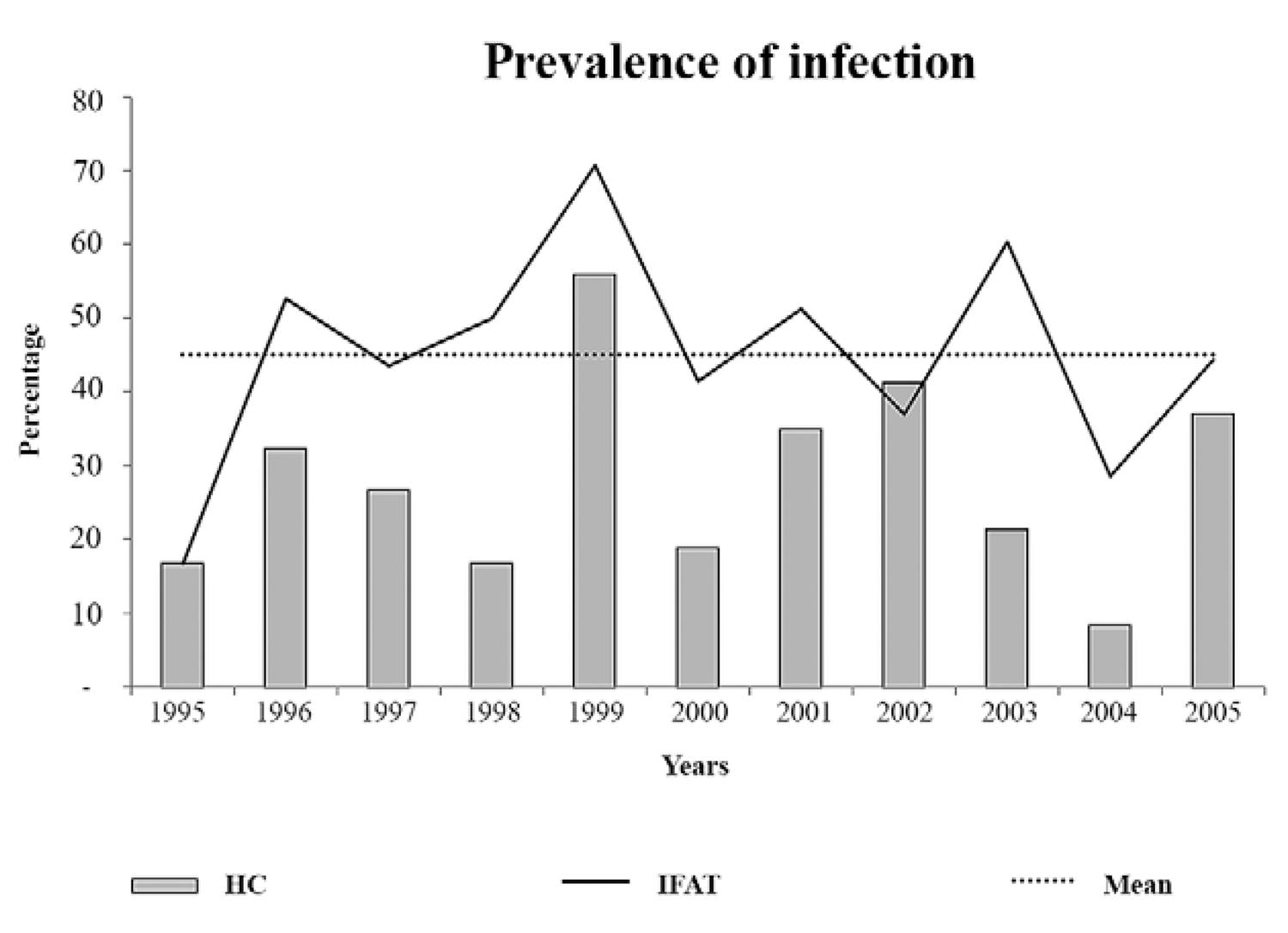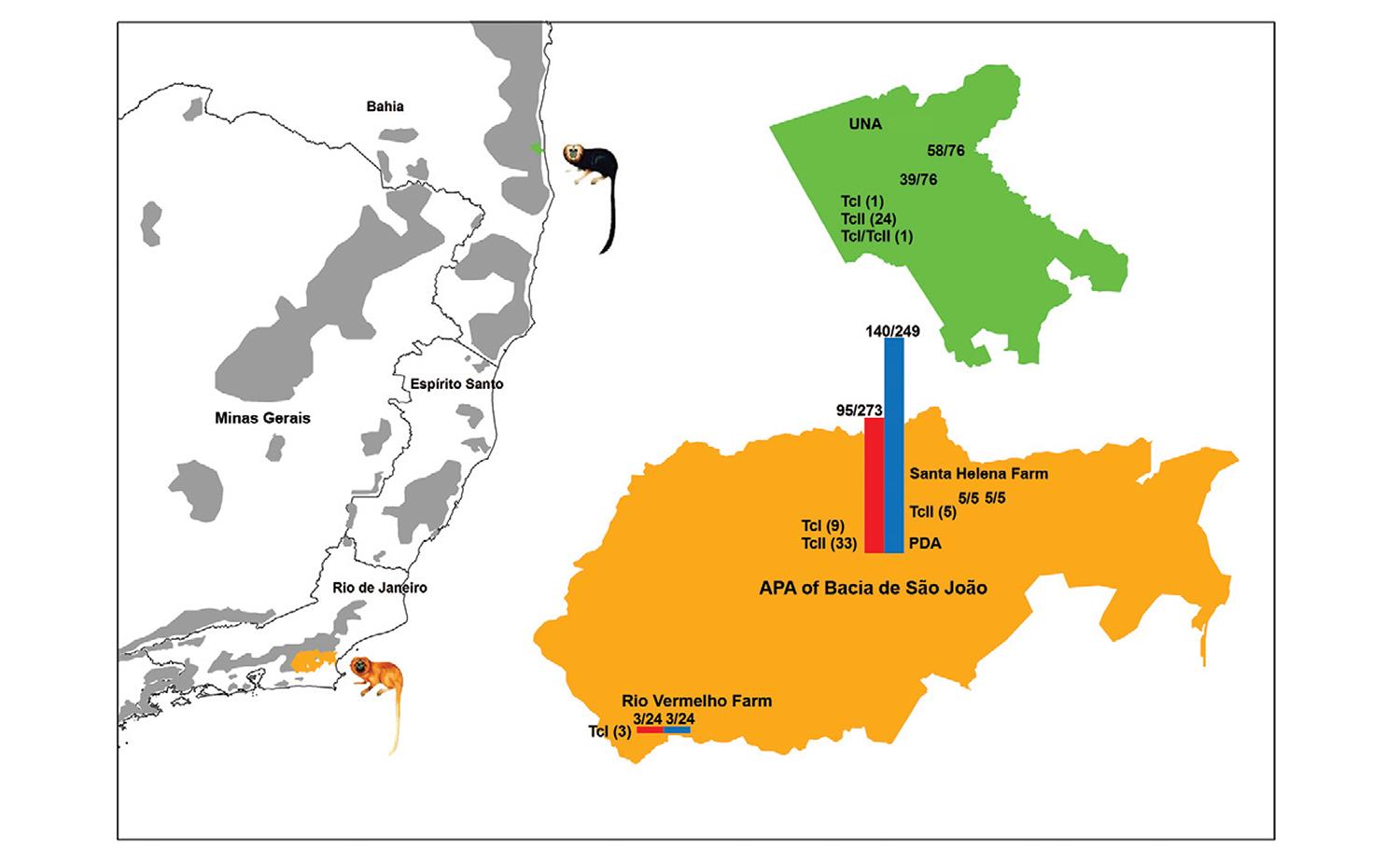Here, we present a review of the dataset resulting from the 11-years follow-up of Trypanosoma cruzi infection in free-ranging populations of Leontopithecus rosalia (golden lion tamarin) andLeontopithecus chrysomelas (golden-headed lion tamarin) from distinct forest fragments in Atlantic Coastal Rainforest. Additionally, we present new data regarding T. cruzi infection of small mammals (rodents and marsupials) that live in the same areas as golden lion tamarins and characterisation at discrete typing unit (DTU) level of 77 of these isolates. DTU TcII was found to exclusively infect primates, while TcI infectedDidelphis aurita and lion tamarins. The majority ofT. cruzi isolates derived from L. rosalia were shown to be TcII (33 out 42) Nine T. cruzi isolates displayed a TcI profile. Golden-headed lion tamarins demonstrated to be excellent reservoirs of TcII, as 24 of 26 T. cruzi isolates exhibited the TcII profile. We concluded the following: (i) the transmission cycle of T. cruzi in a same host species and forest fragment is modified over time, (ii) the infectivity competence of the golden lion tamarin population fluctuates in waves that peak every other year and (iii) both golden and golden-headed lion tamarins are able to maintain long-lasting infections by TcII and TcI.
Trypanosoma cruzi; wild free-ranging mammals; Atlantic Rainforest; reservoir host; sylvatic transmission cycle; discrete typing unit; DTU




